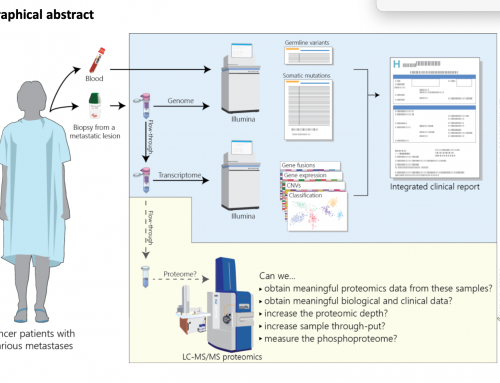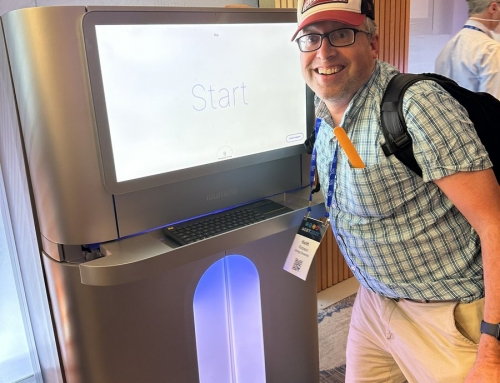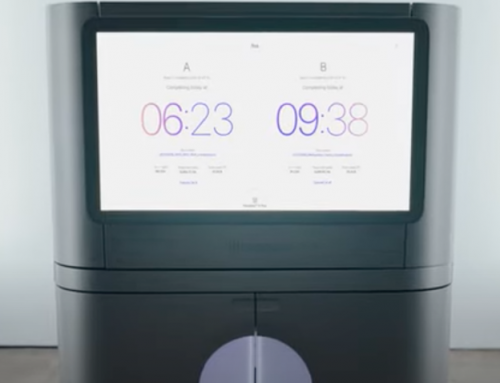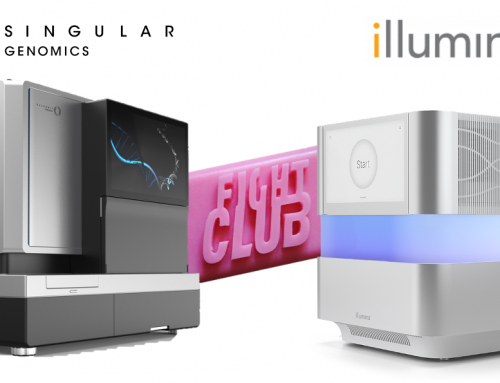Everyone who has read this blog more than once has seen the Moore’s Law slide below (at a meeting, online, in a book, in a TED talk…). Many times this has come from the NHGRI who have tracked sequencing costs for yonks. Their costs presented in these graphs are for production sequencing i.e. large-scale genome sequencing and include: reagents, instruments (amortised over 3 years), servicing (I think), labour and primary informatics.
It is clear to everyone that there was a precipitous drop from the introduction of the Solexa/Illumina (and to some extent SOLiD) technologies in 2006/2007. This was followed by close to 10 years of falling costs. However since 2015 the $1000 genome has stuck around and (ignoring recent announcements from Illumina, ONT and MGI) is what the NHGRI is still paying in 2019.
Why are we stuck with the $1000 genome? Answers below please…
You can grab the data here: Sequencing Costs 2019.











Well, no secrets here… It’s because ILMN completely controls the high end (NovaSeq-type) end of the market. Without competition, there’s generally no need to reduce prices. They would only do it if the market was elastic enough so that they would win even more business (more $$) if they lowered prices. They did that when they launched the HiSeq X, but they haven’t really done it since. Hopefully for the market both ONT and BGI/MGI will start applying some pressure.
Whilst everyone I know would like cheaper sequencing, I’m less sure they can bring in more samples to compensate. Does this mean WE’RE responsible for the high price!?!
I think the market will continue to be pretty elastic. When prices drop to $100 or even $10, new use cases will come up. But the elasticity won’t be instantaneous – it will take a while for the market to catch up. That’s why Illumina is “priming the market” by talking about the future $100 genome on the NovaSeq architecture. Also, just think about what people would do if we could have $1 RNA-Seq or metagenome runs (including sample prep). Measuring your transcriptome or metagenome could become as common/frequent as weighing yourself or taking your temperature. (Yes, I’m jumping ahead quite a bit and assuming there’s a super-easy-to-use POC machine to go along with these cheap runs). As for who is responsible for the high prices, you needn’t feel guilty. We can continue blaming Illumina and the relative lack of competition. 😉
Great point!
Some ideas/thoughts – all of which are related:
1. The value of the data is very high. So, the commercial incentive to reduce costs further does not exist as it did when we were at $5000. Many companies who offer such services at a cheaper than $1000 price retain control of the data, and can sell it to partners for significantly more than the price of sequencing it (as long as they also have other phenotypic data, for instance).
2. The cost of sequencing genomes has simply fallen into line with other healthcare costs. If you compare the value of the information you can gather from a single genome, and compare it to similar medical procedures that cost significantly more – at $1000 you could argue we’re still getting massive ‘bang for your buck”. So – again – there’s not a commercial incentive. People are ‘accepting’ the current price, particularly for clinical applications.
3. Previously it was the cost of sequencing that was limiting widespread adoption. Perhaps that’s no longer the case. Perhaps it’s what the heck we do with the data. And data housing, management and processing/analysis is expensive. So where the cost of sequencing a genome is no longer the rate limiting factor for more sequencing to happen – again – there’s not a commercial incentive to work on reducing the costs and passing those reductions on to the consumer.
4. Previously, sequencing companies and their affiliates would drive down the cost of their service/products to scale up the number of customers and widespread adoption in general. Now, the driver has shifted, and they reduce their own costs to drive efficiencies and reduce costs (while maintaining an acceptable price), to drive up profits by not passing the cost savings on to the customer (a similar point to point 3).
If you read the above, I’m painting a stark picture. I don’t like it for lots of reasons.
HOWEVER, there’s an obvious difference between cost and price, and perhaps the price will continue to fall (as it has done for consumers), as long as the patient/subject is willing to forego some control over how their data is used (sold). I would love to see someone examine this point in more detail.
I predict the price will drop to £zero, or perhaps some people will be paid for access to their data. For that to happen, they need to own it in the first place.
So, market economics will incentivize people to pay (sometimes more) to have their genome sequenced, in the hope that they can sell their own data directly to a buyer (or multiple buyers). A new market for technology that allows people to gather, own and house their own data will exist. This will sit alongside a wider drive among people to retain control of their own data (much of which is not health-related). See Tim Berners-Lee’s Solid project and Inrupt company. https://qz.com/1407428/tim-berners-lees-solid-and-inrupt-let-people-control-their-own-data/
Richard, your view is a very “human healthcare” centric. There are actually lots of other uses for sequencing (research, agbio, forensics, etc) that don’t have to deal with the weirdness of the healthcare market. I think the things you bring up are relevant long term, but they aren’t having a big influence yet. Sequencing costs are still too high for most healthcare applications (or, more specifically, more sequencing would be consumed if costs were lower). For now it’s really all about the complete lack of pricing competition that Illumina is facing.
In the future the consumer price may drop close to zero, but don’t fall into the trap of overvaluing any one individual genome. Lots of value in aggregate genomes, but the genome of a single healthy person is pretty low. LunaDNA had to estimate the value in one of their SEC filings and it was ~$5-10.
I’m so happy that you brought up the value of knowing the genome of a healthy person. In 2005, I was heavily involved in assessing the “value” of next-generation sequencing technologies and I quipped that I would pay $1,000 for my genome sequence because I couldn’t derive $1,000 dollars worth of information from it. That’s still true today. The fact is that there are a relatively few number of highly penetrant variants that are well worth knowing about and a vast amorphous background of variants that probably are affecting your risk for various disease phenotypes—when considered independently of environment. If you add this all together, in the state of present knowledge, it wouldn’t surprise me that an individual genome sequence is worth $5-10 to the individual. That isn’t to say that we shouldn’t keep sequencing massively large numbers of people in an attempt to better understand the relationship between genetics and health, but we should be up front that today we simply don’t know that much that is going to matter to you (on average).
…typo in my previous comment…In 2005 I _wouldn’t_ pay $1000 for my genome sequence
I find it hard to see how there is not even $5-10 value in a persons genome.
Well, it does depend on the perspective of who is valuing the genome. For an individual (and especially a nationalized healthcare system), a quality genome with a periodic reanalysis could have tremendous value (>$100k if expensive unnecessary treatments and testing can be avoided). But for a third party (e.g., pharma company or researcher), it’s hard to imagine a single unremarkable genome of a healthy individual being worth that much for any particular project. I’m happy to be wrong, but I haven’t seen any evidence for it yet. Here’s a link to the document LunaDNA filed with the SEC where they estimate the value of the various types of data: https://www.sec.gov/Archives/edgar/data/1741687/000149315218014113/partiiandiii.htm A whole genome is $21 – a bit more than the range I stated, but still pretty low.
[…] Previous […]
2. The cost of sequencing genomes has simply fallen into line with other healthcare costs. If you compare the value of the information you can gather from a single genome, and compare it to similar medical procedures that cost significantly more – at $1000 you could argue we’re still getting massive ‘bang for your buck”. So – again – there’s not a commercial incentive. People are ‘accepting’ the current price, particularly for clinical applications.
[…] price rises. I would argue that the CMA only has to look at the cost of the the genome and see that 5 years of stable prices suggests Illumina has already beaten customers into […]
[…] chart showing the precipitous decline in sequencing costs and I’m sorry to report that the $1000 genome is getting very close to celebrating 5th birthday! The report includes comments from customers on Illumina dominant position and the impact this has […]